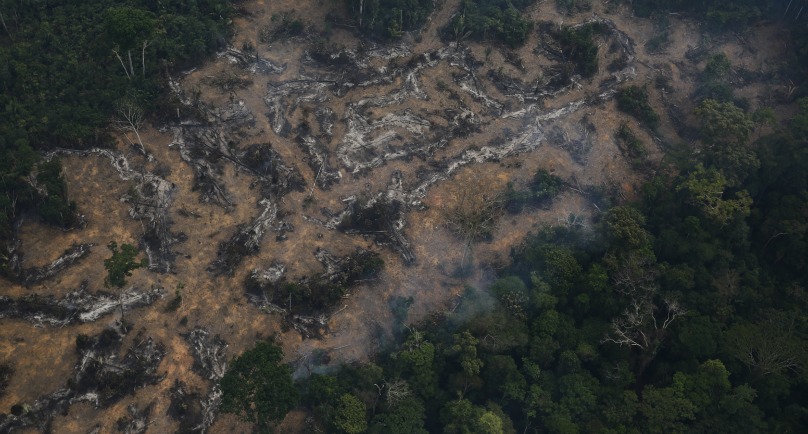Image: An aerial view of a deforested plot of the Amazon at the Bom Futuro National Forest in Porto Velho, Rondonia State, Brazil, September 3, 2015. REUTERS/Nacho Doce
SAO PAULO (Reuters) – The destruction of Brazil’s Amazon forest, the world’s largest intact rainforest, increased by 16 percent in 2015 from a year ago as the government struggles to enforce legislation and stop illegal clearings.
Satellite data for the 12 months through the end of July released on Thursday showed that 5,831 square km (2,251 square miles) of forests were cleared in the Brazilian Amazon, an area half the size of Puerto Rico.
The data released by the environment ministry on Thursday confirmed preliminary information released by environmental institutions recently that were showing an increase in deforestation after a fall seen in 2014.
It comes at a sensitive moment for the Brazilian government as countries around the world gather in Paris to discuss a new global climate agreement to reduce greenhouse gas emissions. Deforestation makes up to around 15 percent of world’s heat-trapping gases, more than the entire transport sector.
A strong increase in the Mato Grosso state, Brazil’s top grains and livestock producer, was the main factor behind the increase. Landowners in Mato Grosso cleared around 1,500 square kilometers (Km2) of forests, compared to around 1,000 Km2 in 2014.
“It was a surprise, particularly the increase in Mato Grosso”, Environment Minister Izabella Teixeira told reporters in Brasilia.
“Pressure for more logging is again strong and coming from agriculture and livestock activities,” she said.
Besides being a giant carbon sink, the Amazon is a biodiversity sanctuary, holding myriad species yet to be studied, so any increase in deforestation usually sparks criticism from environmentalists.
The government often launches police operations to fight illegal loggers, but environmental groups say more is needed.
Teixeira said she has called governors in the states that had the biggest increases in deforestation to discuss the situation.
They would be asked to present evaluations explaining why deforestation increased.
Despite the jump this year, the cleared area is still much smaller than in the past, as the country managed to sharply reduce Amazon’s destruction since it began tracking deforestation in 2004, when almost 30,000 Km2 of forest were lost.
(Reporting by Marcelo Teixeira)
Copyright 2015 Thomson Reuters. Click for Restrictions.


